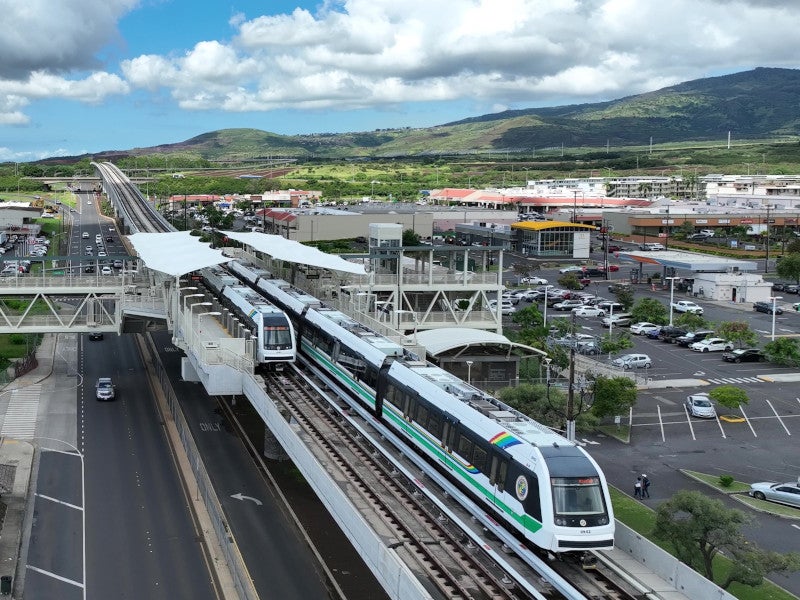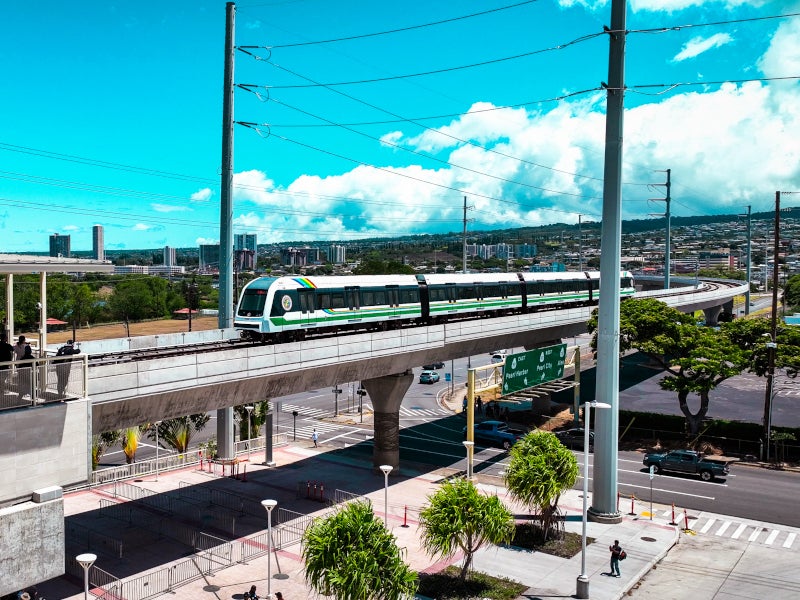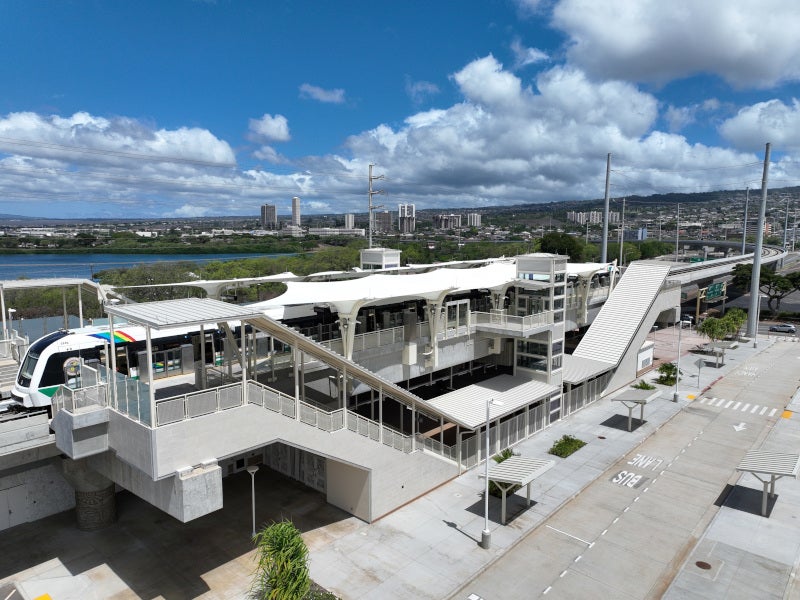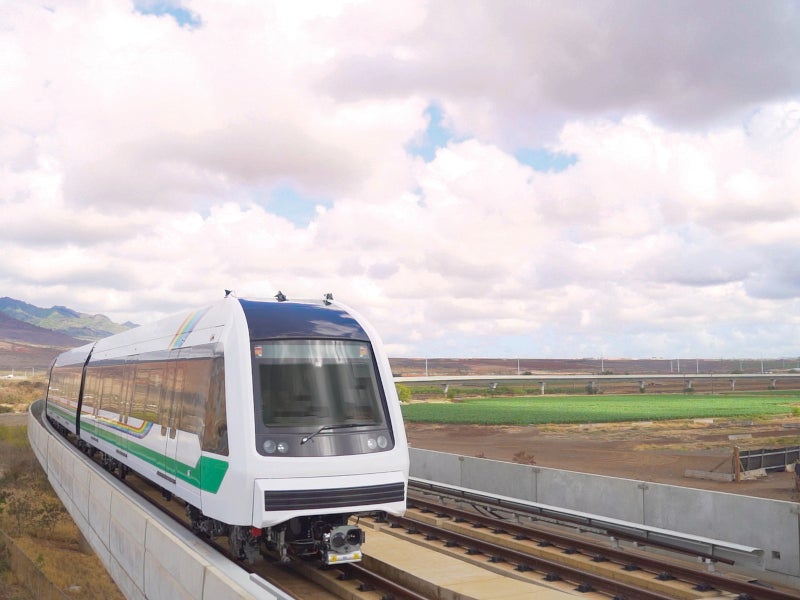The Skyline is an autonomous mass transit system operating in the City and County of Honolulu, US. The rail system will consist of 19 stations stretching from the East Kapolei station to the temporary terminus at Civic Center Station.
The Skyline project is Hawaii’s largest infrastructure project and the first fully autonomous urban railway system in the US. It is being delivered in three phases with phase one currently operational.
The first phase of the rail system commenced operations in June 2023, making it Honolulu’s first new major subway line. The inaugural Skyline passenger service route extends from East Kapolei to Aloha Stadium commenced in June 2023.
The second phase will add approximately 8.3km of track and four additional stations connecting Aloha Stadium to Middle Street-Kalihi Transit Centre. Construction is expected to be completed by mid-2025.
Phase three will add an additional 4.8km of track and six stations to the temporary terminus at Kakaako’s Civic Centre Station. An additional 1.6km of track and two stations ending at Ala Moana’s Transit Centre are planned for a later stage.
Need for Skyline rail system
The Oahu East-West transportation corridor, which is one of the most congested in the world, is currently witnessing high congestion and significant traffic delays.
The new high-capacity transit system is set to bring significant economic advantages to the Hawaiian economy.
The state-of-the-art system will remove approximately 40,000 trips a day from city streets and highways, which is equivalent to adding eight new freeways.
Skyline rail system details
The entire Skyline rail corridor spans 30.4km on Oahu’s south shore.
Nine stations will be in the west end segments, namely Kualaka‘i East Kapolei, Keone‘ae University of Hawai‘i West O‘ahu, Honouliuli Ho‘opili, Hō‘ae‘ae West Loch, Pouhala Waipahu Transit Center, Hālaulani Leeward Community College, Waiawa Pearl Highlands, Kalauao Pearlridge, and Hālawa Aloha Stadium.
Each station’s entrance will be designed with the community it serves in mind with the architecture of the stations reflecting the heritage and culture of the region.
Skyline will be connected with a bus service and other public transportation services in the city. All Skyline stations, except for Honouliuli – Ho`opili Station and Hālaulani – Leeward Community College Station, will be equipped with bus stops and connections.
The three new TheBus transit centres will be located at Keone‘ae University of Hawaii West Oahu, Hō‘ae‘ae West Loch, and Hālawa Aloha Stadium.
In addition to the service provided by TheBus, the island’s public transportation service, enhanced access points will be available for passengers travelling on Handi-Van.
Additional passenger services will be launched to stations along the rail line, which includes the Daniel K. Inouye International Airport.
The entire system is powered by electricity and will move people towards sustainable modes of transportation and away from polluting private vehicles, reducing emissions and traffic for residents and visitors.
Services and amenities at the stations
The Skyline stations will feature ticket vending machines (TVMs), HOLO card load or reload kiosks, stairs, elevators, and escalators. Passengers will be able to use their HOLO cards for both the Skyline and TheBus services.
The stations are fully accessible, Americans with Disabilities Act (ADA)-compliant with platform seating and canopy, interior lighting and exterior lighting, and station operators and attendants.
Closed-circuit video cameras and security personnel, emergency telephones, and information call boxes will be installed.
The stations also feature bicycle parking, TheBus, Handi-Van, and passenger vehicle drop-off and pick-up areas.
Rolling stock of Skyline
The Skyline rail fleet consists of 20 four-car trains in total, with each of the four-car trains being able to accommodate 800 passengers.
Each train measures 260ft long with wide gangways between the cars so that passengers can move around freely taking advantage of all available space.
The trains will feature air-conditioning, Wi-Fi for passengers, and space for bikes, surfboards, strollers, and luggage.
Additionally, they will have dedicated wheelchair-accessible areas that allow passengers with disabilities to move freely onboard and off the train.
Contractors involved
Honolulu Authority for Rapid Transportation (HART), the semi-autonomous public transit authority of the City of Honolulu, is responsible for the planning, design and construction of the 18.9km automated fixed-guided way rail system.
HART transferred the phase one segment, 43 acres of the rail operations centre, as well as 12 four-car trains, maintenance, and storage facility to Honolulu’s Department of Transportation Services (DTS). The transferred assets are operated and maintained by DTS.
Hitachi Rail was responsible for manufacturing the passenger vehicles or train cars for the Skyline rail system.
The company was also responsible for designing and building the subsystems, testing, and commissioning the entire Skyline system, and operating and maintaining the system during passenger revenue service.
The contract for the Airport Guideway and Stations Design-Build, part of phase two, was awarded to a joint venture (JV) comprising Granite Construction, Shimmick Construction, and Traylor Bros in 2016.
Infrastructure consulting company AECOM secured the contract to oversee the design-build contracts for the rail system’s first two segments. The company is also responsible for designing the second phase of the elevated rail guideway.








